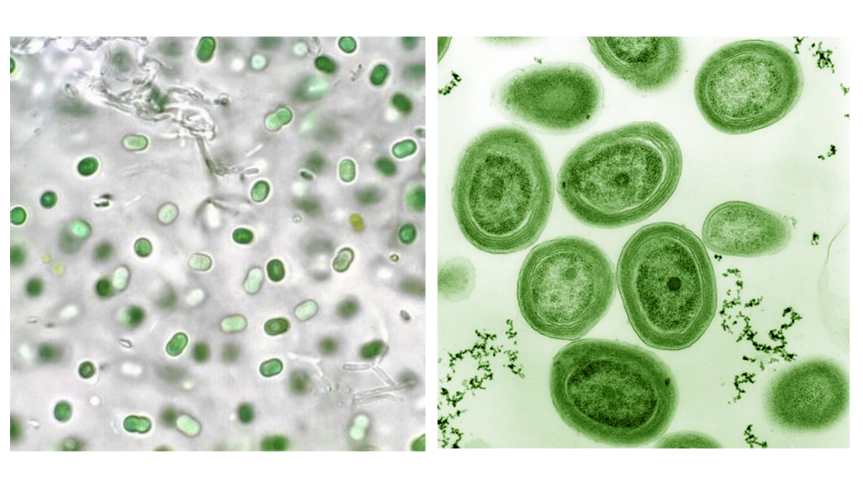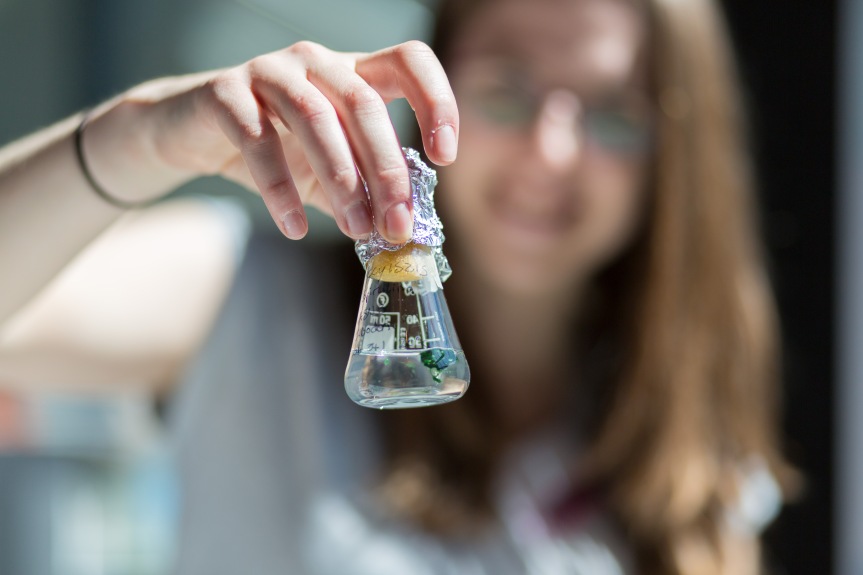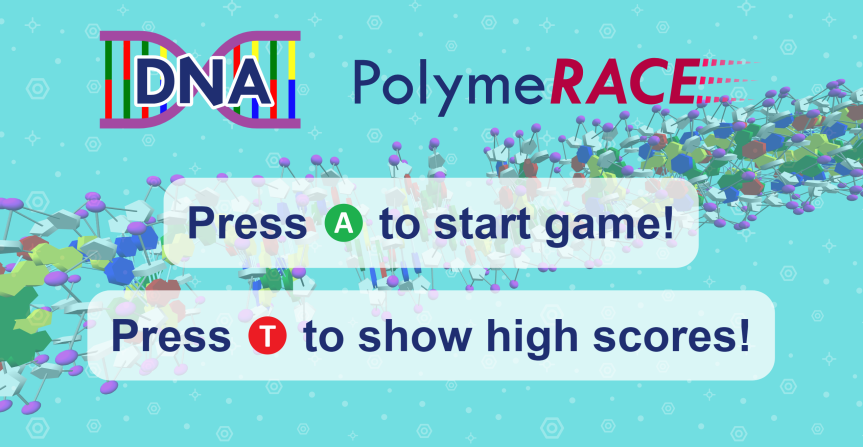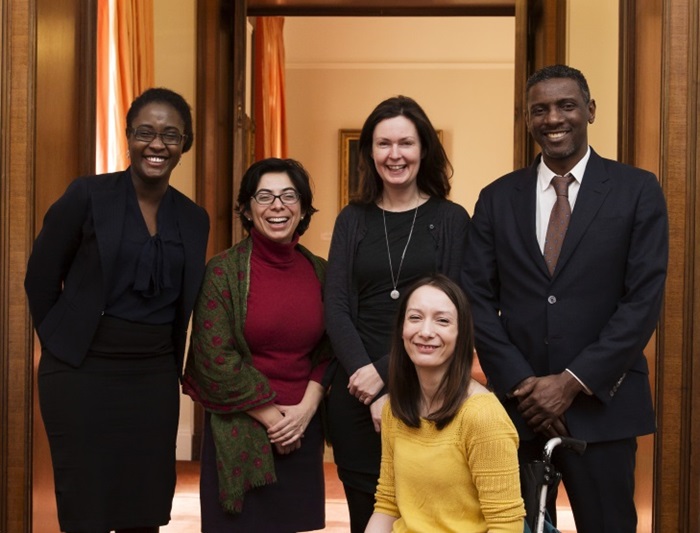Research Without Borders Showcase
19th May 2021
Cassie Hopton and Joanne Boden exhibited their research on bacterial life support systems and co-evolution of life and the biosphere at a festival of postgraduate research. To find out what cyanobacteria are, how they could help us survive on other planets and what their DNA can tell us about the evolution of life on Earth, watch the videos below. We’d love these to become educational tools, so if you have any ideas or comments, please get in touch by commenting on YouTube (using the links below).
Bacterial Life Support Oxygen: Friend or Foe?
Super/Science Episode 5: Early Earth and Cyanobacteria
Patricia Sanchez-Baracaldo talked about Cyanobacteria and the formation of a habitable world. Watch Online Here
Oxygen is essential for complex life forms as it is used during aerobic respiration. During the early Earth there was no oxygen in the atmosphere, and the oxygen we enjoy today has accumulated as the result of biological activity. Blue-green algae, otherwise known as Cyanobacteria, were the first organisms that worked out how to perform photosynthesis – it is during this biological process that oxygen is released into the atmosphere. During this session, we will explore when Cyanobacteria evolved, how Cyanobacteria contributed to making our planet habitable, and why it took so long for complex life to appear in our planet.

Research Without Borders Showcase
On 15th May 2019, Joanne Boden showcased her PhD research to the local community at the Research Without Borders Showcase Exhibition at Colston Hall, Bristol. Her exhibit was entitled “What lived on Earth Before the Dinosaurs?” and offered opportunities to see 5 harmless descendants of blue-green cyanobacteria under a state-of-the-art light microscope and find the sole NiSOD gene in a 75-page booklet detailing every known nucleotide in the genome of Prochlorococcus marinus.

Royal Society Summer Science Exhibition
On 3rd July 2018, Maisie Nash, Joanne Boden and Giorgio Bianchini joined Patricia to showcase their research to members of the public at the Royal Society Summer Science Lates Exhibition in London. Our exhibit was entitled ‘Sweet World of Microbes’ and offered opportunities to extract DNA from your cheek cells, visualise the structure of DNA by building your own model our of sweets and learn about DNA replication by playing a computer game called DNA polymeRACE.
More information about the event can be seen here: https://royalsociety.org/science-events-and-lectures/2018/07/summer-science-lates/
Building DNA Molecules Out of Sweets!
On Friday 29th June 2018, The Sanchez-Baracaldo Lab Group used jelly babies, cocktail sticks and strawberry laces to teach primary school children about the structure of DNA. Nucleotides are represented by yellow, green, red and purple jelly babies, with cocktail sticks used to “bond” them together between two strands of strawberry laces as the sugar-phosphate backbone. When twisted (as shown in the picture below) a double-helix-like shape is created.
The children were excited to photograph their finished “DNA molecules” and quickly learnt about the concept of complimentary base pairing by assigning each colour of jelly baby it’s own specific nucleotide.
Building on this success, we look forward to returning to Bishops Road Primary School in Bristol, to teach other classes about life as a scientist and the structure of DNA.
Learn about DNA replication with DNA PolymeRACE
DNA PolymeRACE is a game that shows how DNA replication takes place.
Use the A, C, G, and T keyboard keys to insert the complementary nucleotides to the DNA sequence. The game lasts two minutes; at the end, a score is shown. The score can be saved and compared to other players.
This game was originally designed for the “Sweet world of microbes” activity at the Royal Society Summer Science Exhibition Lates (https://royalsociety.org/science-events-and-lectures/2018/07/lates-sweet-microbes/) and was played using a custom-built box with four large buttons instead of a keyboard.
Play the game here: https://uz.sns.it/~arklumpus/DNAPolymeRACE/
For any queries, do not hesitate to contact us!

Invited Panel Speaker, Royal Society Annual Diversity Conference 2016
International Polar Science Week #tweetyourthesis
On 25th September 2015, Nathan took part in a #tweetyourthesis event as part of APECS International Polar Science Week.
You can read his contribution, along with many more here
Royal Society/Science Museum lates: The Next Big Thing
On 24th June 2015, several members of the Bristol Glaciology Centre joined Patricia to take part in ‘The Next Big Thing’, a Royal Society event hosted as part of Science Museum Lates.

Life in extremes
Microbes thrive under conditions humans cannot. Join Patricia Sanchez-Baracaldo and her team to discover how microbes support life at the poles and how they interact with masses of melting ice.
The event was a huge success that saw demonstrations of glacier albedo, DNA extraction and the structure of the double-helix in candy form!
You can see photos from the event here
Timelapse video of different melting rates of ice when clean and covered in sediment, as demonstrated at the Science Museum:
https://royalsociety.org/events/2015/06/science-museum-lates/
Extremes in Science
To read the blog chick here
I wasn’t always a scientist – Royal Society Diversity in science
‘I wasn’t always a scientist’ reveals the stories of scientists who didn’t take traditional routes into their scientific careers
Patricia took a career break to raise her young family before returning to science. To see here story follow the link here



